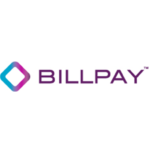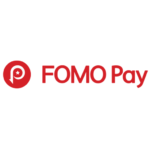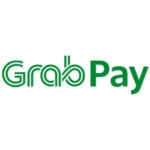
Meet 42 Mobile Payment Players Active in Singapore Right Now
by Fintech News Singapore December 10, 2018As one of the most highly banked populations in Southeast Asia (Standing at 96.4% of banked adults at 2014), Singapore presents a unique ecosystem in the same region.
This is part of why Singapore is popularly deemed as one of the fintech hubs of Asia.
But it also means that Singaporean mobile payments platforms extend beyond just e-wallets that is gaining popularity among its neighbouring regions. For one thing, it’s been said that Singaporeans are slow to adopt similar advancements that have taken other regions by storm, simply because of force of habit.
On the other hand, there is a wider variety of fintech offerings available to the Singaporean public, even just under the umbrella of ‘Mobile Payments’ including converting regular debit payments to one’s credit card to reap rewards, to neo-banks.
Besides just a payments platform, Aimazing is primarily known for its ability to capture real-time receipt data and even store physical receipts. The platform also has a loyalty programme.
Founded in 2000, AsiaPay provides payment processing solutions to banks and e-businesses covering international credit card, debit card, bank account/net banking, wallet, over-the-counters, and other prepaid card payments. AsiaPay’s services include multi-currency, multi-lingual, multi-card, and multi-channeled payment solutions.
Samsung Pay is a mobile payment and e-wallet service by Samsung Electronics that lets users make payments using compatible phones and other Samsung-produced devices.
Designed to suit apple products like the Apple Watch or iPhones, ApplePay is a mobile payment solution that is able to pay for products in real life, and via online purchases by linking one’s debit or credit card. It can draw from existing cards, and store value.
Stylised G Pay, this digital wallet platform and online payment system was developed by Google for in-app and tap-to-purchase transactions on mobile devices, and compatible with Android phones, tablets or watches.
Singtel Dash is an all-in-one mobile payments solution for commuting on trains, buses or taxis, or can be used for shopping or remittance. Singtel Dash is also linked with the 16-digit Dash Visa Virtual Account for Visa paywave transactions.
DBS PayLah! is a personal mobile wallet which allows users to perform fund transfers via a mobile number. Users can also send eAng Baos, request for funds from others, request for payment links, pay bills, donate money to charitable organisations and others.
WeChat Pay
An extension of the WeChat chat platform, WeChat Pay is considered one of the e-wallet giants of Singapore and expanding into other Asian countries. The e-wallet is able to store value, and be used to pay for retail transactions. Starting November 1, the wallet is usable at Cold Storage, Giant, 7-Eleven and Guardian stores islandwide.
NETSPay is a mobile app that allows Singaporeans to make digital payments via DBS, POSB, OCBC and UOB NETS Bank Cards. It digitises one’s cards so that users can pay with their mobile phones.
Mileslife is a mobile payment and digital loyalty platform that creates a more convenient ecosystem to connect airlines, merchants, banks and consumers.
OCBC Pay Anyone lets you pay most people, including those on PayNowusing their mobile number, Facebook or email address. You can also request payments using a generated QR code.
Designed for Mi phones, MI Mobile Wallet allows for direct credit/debit bank payments via app provided by MOLPay, or through PayPal at retail outlets or online.
YouTrip is a multi-currency travel wallet and in-app money changer, and provides a physical card tied with MasterCard. It aims to provide card payments with rates comparable to money changers.
Rebranded from Lazada’s helloPay in Singapore, Alipay is the other e-wallet giant from China on its expansion bid. It allows merchants to add an Alipay option on their website, and provides a wallet for users to pay for goods and services.
In a bid to reduce the circulation of coins in Singapore, Bucket wants Singaporeans to ‘bucket’ their change in a virtual wallet insteaed, with option to cashout or use it as savings.
Still to be launched, BillPay will be a free unified billing and payment service that will bring different bills into one platform for the sake of convenience, and to be environmentally friendly.
Card.io mobile payment app lets iOS, Android users scan a credit card for payments using one’s mobile phone.
CardUp is an online card payments platform for cash management which enables any payment made by bank transfer today to be shifted to a credit card, regardless of whether the recipients accept credit cards.
Fastacash offers a payments platform that enables users to transfer value (money, airtime, other tokens of value, etc.) along with digital content (photos, videos, audio, messages, etc.) via social networks and messaging platforms.
FlexM is a financial service provider offering electronic payment solutions in Southeast Asia. For Singaporeans, Flexpay by Matchmove can also provide banking via their mobile phones. FlexM also offers a pre-paid Mastercard and B2B payment solutions that help businesses to make bulk payments and avoid heavy bank charges.
FomoPay is an alternative payment platform enables merchants & enterprise to accept a full suite of digital payments including mVISA, NETS Pay, WeChat Pay etc. The company is also part of the Monetary Authority of Singapore’s SGQR taskforce to jointly develop common QRCode standard.
GrabPay was launched to accompany its ride-hailing component, but now the company is attempting to grow GrabPay as an e-wallet in its own right. Grab will be offering international wallet-to-wallet remittance soon, and for now its platform offers loyalty points via GrabRewards.
Hitpay integrates with social media platforms to allow users to hit a button and buy directly from the page. Integrates with Facebook, Instagra, Pinterest, WhatsApp, WeChat and Facebook Messenger.
Kashmi is a neo-banking product designed for spending, saving, lending, investing and budgeting. Kashmi users can utilise the platform as their primary bank account; where users are able to manage their finances, send/receive money to friends or service providers, save, invest (stocks etc), take loans.
Nearex develops a mobile micropayment solution for small merchants and consumers in Singapore via Xip, a micropayment system that integrates with existing mobile wallets, electronic banking accounts, and telecom networks.
Numoni created and developed the cash-transaction terminal – NUGEN – in a bid to empower the underbanked community with e-transactions. This self-service NUGEN terminal enables micro remittances, micro payments and micro loans.
In January 2012, Numoni was formed in Singapore to bring financial inclusion to the underba
Oojibo is a fintech company focused on building and delivering end-to-end solutions from technology to offline agency network, Oojibo claims to have built a business model to enable Financial Inclusion.
SmoovPay is a web and mobile card payment service provider for merchants, offering a variety of functions and aims to help accept payments via channels like desktop, mobile and tablet.
MatchMove
MatchMove’s proprietary Banking Wallet OSTM enables ‘Banking As A Service’ for spending, sending money and lending within any app. The purpose is for B2B businesses and their customers to spend both online and offline via instantly issued prepaid cards on major card networks. Its send capabilities include P2P domestic transfers, cross-border remittances, P2M and mass disbursements to global recipients.
Ubiqpay is an electronic payment company that allows consumers to pay for purchases, bills and transfer money to other users. The service also allows their customers to deals with their merchant partners while collecting reward points for their purchases.
LiquidPay is a QR code-enabled mobile payment app that combines payments with rewards and discounts during payments. Some of its offers include discounts and flash deals at hawker stalls and merchants, and will apply them automatically when paying on Android.
Soon to launch in Singapore, is a neo-bank that allows users to use an app to spend overseas in over 150 countries without fees or holds, and allows users to exchange 24 different currencies in-app. Revolut is also a remittance service that allows domestic and international money transferes with the real exchange rate, and even issues a physical card.
FavePay allows users to pay their bills, usually at eateries though it is also accepted in other retail stores, with their mobile phones. FavePay draws users through cashback.
UOB Mighty digitises debit and credit cards and puts it on the app. It is accepted at over 50,000 Visa payWave Mastercard contactless and NETS contactless terminals across Singapore.
Singapore Airlines’ KrisPay is ablockchain wallet that lets members of KrisFlyer, the carrier’s frequent flyer program, convert their air miles into digital currency. Members can use as little as 15 KrisPay miles (equivalent to US$0.07) to pay for items at the airline’s 18 partner merchants in the city-state.
PayPal was one of the first mobile wallets as we know them today to gain global presence. Its functions are similar to that of more conventional wallets today. It stores value, can be used for purchases online, and can remit money.
Founded in Europe, the Yoyo Wallet combines the function of a payments platform and a loyalty programme into one app. Besides their own app, Yoyo also develops branded loyalty and payments apps.
BOC SG eWallet
Run by the Singaporean arm of the Bank of China, the BOC SG eWallet is a mobile app that enables payments via the scanning of QR code for BOC UnionPay credit card holderse in Singapore, and offers a version for both consumerse and merchants in its QR code scanning functionality.
Stripe enables shops online, between e-commerce to software developers to accept payments via Stripe’s payments infrastructure. This includes subscription service models or on-demand marketplaces.
M1 Remit is a homegrown remittance solution that is able to transfer money to Bangladesh, India, Indonesia, Malaysia, Myanmar, Pakistan, Philippines, Sri Lanka, Thailand and Vietnam via mobile app. It allows users to track their transactions as they travel to the intended destination.

















































